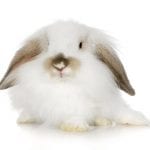Scientific Facts
| Common Name: | Mini Lop, German Lop, American Chinchilla Rabbit |
| Scientific Name: | Oryctolagus cuniculus |
| Life Span: | Around 10 years |
| Size (Adult): | Medium |
| Weight (Adult) | 6.5 pounds |
| Habitat: | Woodlands, agricultural areas |
| Body Shape: | Compact |
| Country of Origin: | Germany |
Physical Description

The Mini Lop is a breed of domesticated rabbits that is fully recognized by the American Rabbit Breeders Association or the ARBA. It may look similar to the Miniature Loop, which is duly recognized by the British Rabbit Council or the BRC; however, there are differences between the two breeds. Don’t be confused because, in the UK, the Miniature Lop is also called the Mini Lop. The Mini Lop is the same as some other small rabbit breeds found in the US and the UK.
The ARBA describes the Mini Lop as a “basketball with a head,” and this may be because of it’s round and compact body appearance. The Mini Lop has a compact body and is one of the smaller rabbit types. An adult Mini Lop weighs from 3 to 6 pounds.
The body is huge and thick, and this is despite its small size. It has defined muscles and well-rounded from head to toe. It has developed dewlaps and is easily seen in female Mini Lops. The neck is short; sometimes, there seems to be no neck at all! The large head sits very close to the body.
As the name of this rabbit suggests, it has rounded, fuzzy ears that sit lopping on either side of the head. It is a pudgy bunny with long ears that seem to be very heavy on each side. But these are simply regular descriptions of the breed. To fully understand what a Mini Lop is from a professional’s point of view, here are the ARBA accepted standards of perfection for this breed.
Accepted Colors
Showing Mini Lops is a pageant of colors. There are two categories of colors for this breed: solids and broken. Only the following colors are accepted by the ARBA: Chincilla, Lynx, Black, White, Ruby-Eyed White, Chestnut Agouti, Blue-Eyed White, Opal, Blue, Lilac, Chocolate, Orange and Tri-Color. It’s very impressive to see so many Mini Lops in a variety of spectacular colors.
Mini Lop Standard of Perfection
The point system created by the ARBA is called the Standard of Perfection. In this point system, the different body parts of the rabbit have a specific point.
The General Type is 80 points in total, and this is divided into
- Body – 43 points
- Head – 20 points
- Ears and Crown – 12 points
- Feet, Legs, and Bone – 5 points
- Fur – 10 points
- Color and Markings – 5 points
- Condition – 5 points
Aside from the General Body, the Weight Limits for the Mini Lop according to the ARBA Standard of Perfection is as follows
- Senior Bucks – these are Lops 6 months and older with a weight of 4.5 to 6.5 pounds
- Senior Does – these are Lops 6 months and older with a weight of 3 to 6 pounds
- Junior Bucks and Does – these are Lops under 6 months with a weight of 3 to 6 pounds
Under the ARBA, the Mini Lop is a medium-sized rabbit. Senior Does and Bucks should be 6 months and older and weigh not higher than 6.5 pounds with an ideal weight of 5.5 pounds. Junior Does and Bucks should be below 6 months and should weigh less than 6 pounds. The different colors in a variety are not judged separately. These are divided into two groups, classes, solids, and broken designs or patterns.
When checking the Mini Lop, the ideal specimen should have a general appearance of a large, thick-set, completely-muscled body. The specimen should have a balanced width, depth and there must be a slight taper starting from the hindquarters to the rabbit’s shoulders. There must be a top-line from the base of the head, which rises over the spine; the peak of this line is over the center of the hips.
The ideal specimen should have smooth hips, well-rounded, and full lower hips. Faults will be awarded to specimens with a long and narrow body, undercut along the hips and flat hips or shoulders.
The head of the Mini Lop rabbit must have strong and bold parts. The head should be close to the shoulders, and the neck should be short. The crown is arched, and the skull has a slight curvature from the base of the crown to the nose. The head must not be wider and should have a well-filled muzzle. The head must be balanced with body size. The head of bucks is usually wider compared to doe heads. Faults will be awarded for long and narrow heads, pointed noses, and a concave crown.
The Mini Lop ears carry equal points as the head. The Mini Lop ears should rise from the strong base and then loop vertically on either side of the head. The ears have a horseshoe appearance. The ears should be close to the cheeks with the openings toward the head. The length of the ear should be .75 to an inch just below the jaw. The ears must also be balanced with the body size of the rabbit. Finally, the ears must be well-furred and have rounded ends. Faults are awarded if the ears shave poor carriage, with folds, are thinner than usual, and the ear openings are turning away from the rabbit’s head.
The Legs and Feet are also important for a good body type. These must be straight, thick, and short. Pigmentations on the toenail may be lighter or darker in the broken color group. The nails on the front and the rear may be different in color, but all the front nails should be the same as all the rear toenails. Faults will be awarded when there are unmatched nails in different or broken colors.
The Mini Lop fur is its crowning glory. Prize-winning specimens should have thick and dense furs. It should be glossy, lustrous, should have a medium length with a good roll towards the back of the rabbit. Faults are given to rabbits with long, thin, harsh, or extremely short fur.
The color of the Mini Lop is one of the toughest to judge. When making a stock selection, the color should be the last to consider. The type must be considered the first and then other factors; the final one should be the color of the rabbit fur. Color points are divided between color and markings. The broken color pattern includes unrecognized color groups together with white. A lovely butterfly marking on the rabbit’s nose with wings that have a white outline is preferred together with colored eye circles with both ears with color. The body must have a blanket or patched marks. The front feet must be white, while the rear should be white. A solid color pattern includes any unrecognized colors. Faults are awarded to specimens with lacking complete markings on the head, with light body patterns and with excessive white fur in a solid mark or pattern.
Lastly, the perfect specimen may have any eye color but must match. Rabbits with eyes that don’t match are disqualified, including foreign color spots in the solid pattern specimens.
Fast Facts
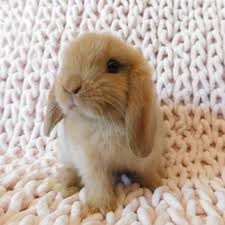
The Mini Lop is one of the smallest breeds of rabbits and is also one of the most popular. Many rabbit lovers have fallen in love with the Mini Lop because of its size, docile behavior, and its many lovely colors. Also, this is the cutest of all breeds and was created using six different breeds.
Temperament
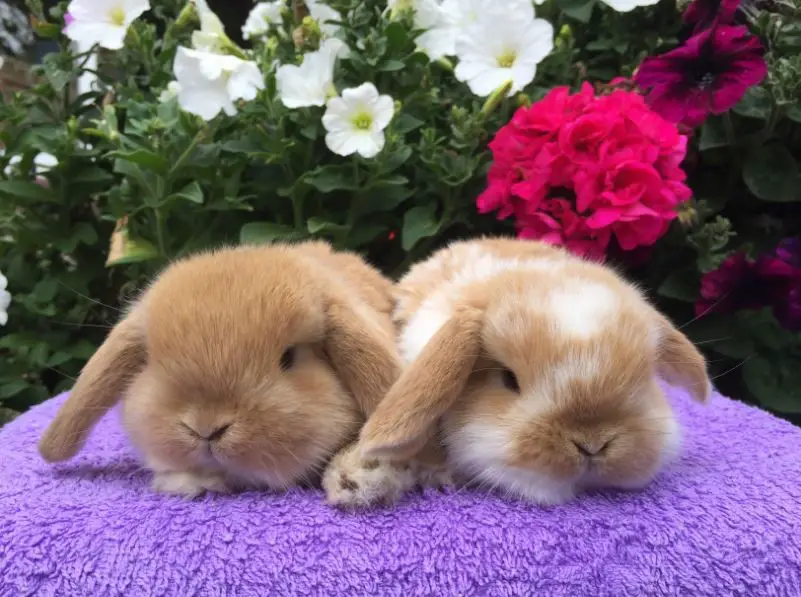
The Mini Lop is categorized as a laid-back breed because it came from a Lop breed. However, some say that the Mini Lop is a hyper breed because these are small and energetic bunnies. But actually, the truth is that the Mini Lop can be a combination of the two.
Rabbits are also individuals; therefore, each one has its own unique personality. Making generalizations off the breed results in incorrect impressions. So when choosing a rabbit, consult a specialist or a rescue operator, breeder or vet to decide about the animal’s temperament. Also, take time to get to know a rabbit, observe it before you make your own conclusions about which rabbit is the best to pick.
Mini Lops, just like all rabbits, are prey animals. These are often wary of any sudden movements, possible threats, new situations, which can affect its safety. You should allow your pet Mini Lop to approach you according to its own terms. Position yourself on the floor near the rabbit and just let it come to you. Give it treats so you can quickly gain its trust. Once the rabbit is comfortable in its new surroundings, you will be able to see its true personality shine through.
Once your Mini Lop is comfortable in its new home, you may now play with it and cuddle it as much as you can. Owners of Mini Lops say that this is the cuddliest rabbits and are usually called teddy bears because of their docile nature and affectionate nature.
Children can pick a Mini Lop and play with it. This bunny won’t fight back and will just allow a child to dress it up like a living doll. These bunnies also enjoy a good pat from their head to their tails plus will love to have their ears rubbed.
Mini Lops are very curious rabbits as well, so you must rabbit-proof your home if you plan to take this out of its cage time and again. Use a portable pet fence to limit its roaming area. Close cabinets, seal off vents and cover areas that it must not go. This way, your Mini Lop can remain safe and happy while roaming inside your home.
If you plan to house more than one Mini Lop in an enclosure, the best type of housing should be an outdoor cage. This is perfectly okay with a Mini Lop and may even feel happy since it can socialize with other bunnies. Make sure that the bunnies have enough space. A large space prevents fighting and aggression. Also, a large space is a great place to play. Mini Lops can chase each other from one area of the enclosure to another.
Comparable Breeds
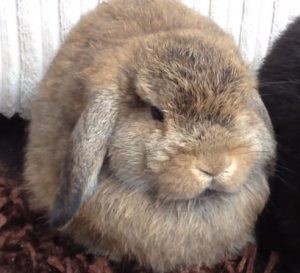
The Mini Lop is often compared to the German Lop and the American Chinchilla Rabbit, but it is completely different from the two.
The German Lop is a large rabbit that can weigh up to 8 pounds. These can live up to 12 years and have a commercial body shape. The German Lop has an affectionate nature, is calm and docile, and thus will make good pets. This breed is recommended for people who live in small homes or apartments.
Meanwhile, the American Chinchilla Rabbit is also a large rabbit that can weigh up to a whopping 12 pounds. It can live up to 8 years and has a commercial shape. It is also a gentle, sweet, and docile rabbit that’s perfect for singles and seniors.
Coat and Colors
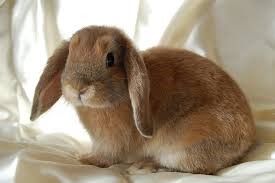
The ARBA recognizes a range of colors and markings of Mini Lops. Seven color groups are accepted:
- Agouti
- Broken
- Pointed White
- Self
- Shaded
- Ticked
- Wide Band
These descriptions are more than just colors, but it also describes a pattern or shade of the Mini Lop to fit a specific preference. The Mini Lop is basically for the rabbit owner who wants a tri-colored, solid white, or black or any kind of color combination.
History of the Breed
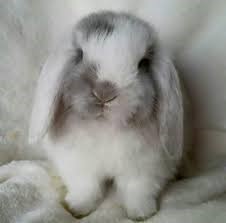
The Mini Lop was discovered by Bob Herschbach at a German National Rabbit Show held in Essen, Germany, in 1972. Back then, the breed was known as the Klein Widder. It was reported that the first Mini Lops were bred using the German Big Lop and the small rabbit breed known as the Chinchilla. The two distinct breeds came in white and Agouti colors.
German Lops weighed 8 pounds and had a slender appearance with thick ears. Herschbach was able to breed the first Mini Lops in the U. S. and was done through breeding two agouti lops and a white female lop. The first babies had solid colors. The next generation had broken colors. And due to the breeding process, they were able to develop a high standard of Mini Lops.
Herschbach’s Mini Lops was introduced at the American Rabbit Breeder’s Association convention in 1974. This event was held in Ventura, California. The result was that the breed should be downsized to create a more compact and attractive specimen. To do this, Hershcbach needed the help of other breeders, and he allowed them to use his Mini Lops. The last thing that the breeder did was to change the name from Klein Widders to the Mini Lop so that the breed can be more appealing.
In 1977, the Mini Lop was now under a new person in charge: Herb Dyke, a new sponsor. In 1978, Herschbach and Dyke created the first Mini Lop correspondence, and in just a year, this group had more than 500 members. These Mini Lop lovers contacted the ARBA because of their support for the breed.
And finally, the Mini Lop became an official rabbit breed recognized by the ARBA. This milestone happened in 1980 in Milwaukee, Wisconsin, at the US National Rabbit Convention. After being recognized as a true rabbit breed, the Mini Lop Club of America was started.
Fun Facts

Nothing could be more fun than playing with a Mini Lop. Children love the Mini Lop than other rabbit breeds because of its size, cuteness, and peaceful demeanor. They can play with the Mini Lop by dressing it up and by playing tea time. The Mini Lop won’t mind getting dressed, handled, and even dropped occasionally. So if you’re looking for a rabbit breed that’s perfect for young children, then a Mini Lop is what you need.
Personality
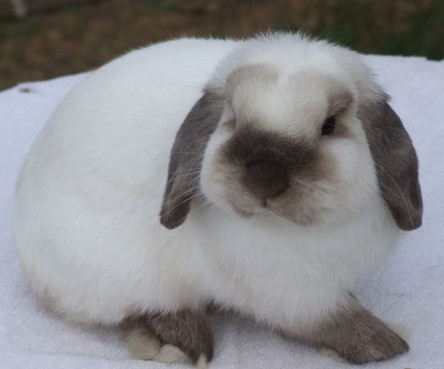
Just like any other animal, the Mini Lop has a variety of personalities, and these are generally friendly and playful. All rabbits may be taught any kind of trick and commands. These may be trained with the use of a clicker.
Mini Lops can show their owners that they are angry, and this is by stomping their hindfoot. Caretakers and owners have noticed this behavior if they were unable to give their food on time. They may also show this behavior if they see strangers move into their areas. They will stomp their feet to show their status.
Care
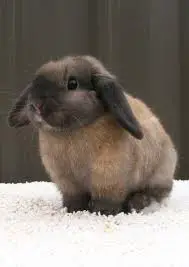
Mini Lops need the same care as with other breeds. This only means giving your pet the ideal diet, companionship, and housing. The main food is hay, and it is the bulk of their diet. There are some commercially-made pellets designed specifically for rabbits with the needed vitamins and minerals for good health and growth. Vegetables and fruit can also be given.
Another thing that rabbit owners should consider is that they are provided with unlimited fresh water and hay inside their enclosures. Hay is needed to keep their digestive tract healthy and regular.
Mini Lops can be pets for both children and adults, but their owners must monitor their pets closely for any possible signs of illness. Also, interacting with their pets every day is a must. An owner who spends time with his pet rabbit is more likely to earn its trust and confidence. Those who just want to place them inside a cage and ignores them won’t be able to develop their pet’s true potential. Most rabbits have lived their lives to the full after interacting closely with their owners.
Spaying or Neutering
Spaying or neutering is needed to control the population of rabbits. If this is not done, rabbit numbers can easily become out of control. This should be done while your rabbits are still at a young age. Most veterinarians wait until their pets reach six months of age to observe the safest practice on spaying.
Bucks can generally be neutered at a younger age, even as young as three months to make them less aggressive; these are not aggressive by nature. Neutering bucks is not really needed. Consult your vet to get the best advice regarding spaying or neutering your Mini Lop.
Supplies and Cages

The home of the Mini Lop should have a wire enclosure and a durable bottom. The bottom should have soft bedding lined up to be comfortable for your rabbit. Because Mini Lops are small, there is no need to create a bigger enclosure.
You must also secure rabbit hay feeders, which are usually attached along the side of the enclosure. This will allow your Mini Lop to pull them and chew when they feel hungry.
When it comes to the tank bedding, you may want to use aspen or wooden pellets. Pelleted horse bedding is another thing that you can use. Avoid cedar or pine. The Mini Lop cage may be cleaned using a cage cleaner or homemade products such as baking soda or white vinegar. Avoid using a commercial cleaner, as well as other materials that may be toxic for your pets.
Daily spot cleaning of their bedding is recommended, you must replace this every week. This will maintain the tank health by getting rid of feces, which is essential in keeping the rabbit, and its home, clean. This also minimizes any ugly smells.
Mini Lops are usually very clean animals. They will also groom themselves and even each other. They are crepuscular, which means that they are active in daytime and evening. Their feedings are done in the evening, and they sleep at an average of 8 hours.
Mini Lops are born without fur and with their eyes closed. They love to be in groups, which means that you may consider this if you want to have a big group of Mini Lops as pets.
Indoor vs. Outdoor Cage
You may also decide whether you want the cage of your rabbits indoors or outdoors. Consider that there are advantages and disadvantages of an indoor or outdoor enclosure. Rabbits that are placed indoors usually have longer lives and are known to be more social and happy.
Meanwhile, rabbits that are trained to live outdoors are skittish and may be easily affected by weather changes, temperature, mites, predators, fleas, as well as other health complications.
If you want to keep your rabbits inside, and do not have enough space, you can construct an outdoor cage to play and socialize. Meanwhile, outdoor cages are easier to clean. These also give your rabbits more room for running around. Remember that the cage should be kept away from direct sunlight, and in areas where there’s no moisture. The cage must be well protected against predators such as other pets like cats and dogs.
An indoor cage may need more maintenance, while outdoor enclosures may just need to be swept daily or hosed down to clean. Consider these pros and cons as you pick the right kind of enclosure that’s right for your needs.
Teeth
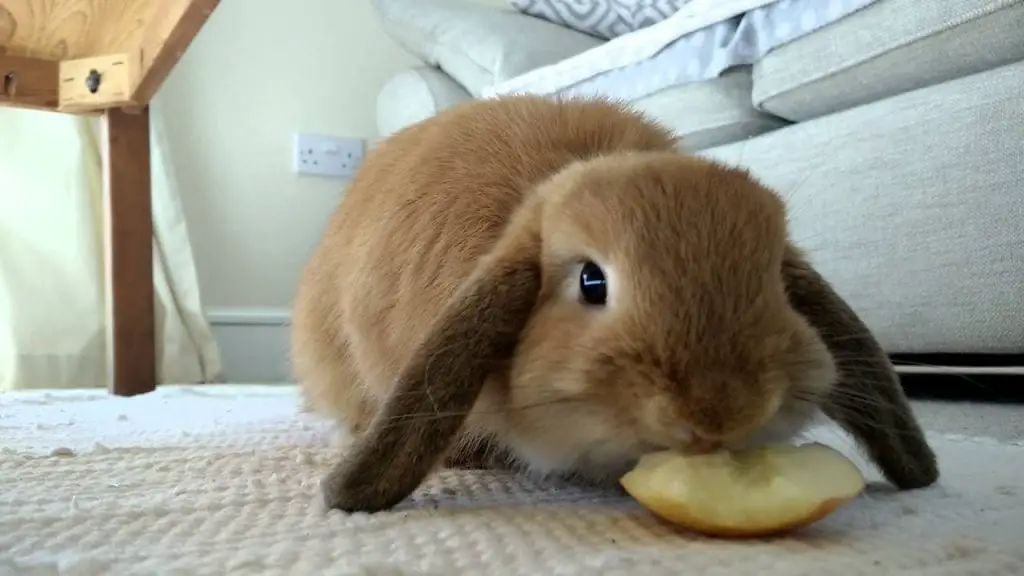
When taking care of Mini Lops, you must also make sure that these have good teeth. A regular checkup of their teeth is needed. This ensures that their teeth will not overgrow. This is why rabbits chew so much or whenever they can.
Their teeth grow too long. When this happens, the teeth can grow right into the Mini Lop’s mouth and jaws. This could be extremely painful for the rabbit. And due to this, a diet that is high in hay is recommended because this files down the rabbit’s teeth naturally while they chew. Consider keeping the health of your rabbit’s teeth, and you can save yourself from expensive vet bills.
Other Notes
Mini Lops are just like other rabbits; they love chewing on things. These rabbits have powerful teeth and will even chew on any wooden part of the house, furniture, and even wiring. This can lead to injuries in the mouth and face and may also electrocute them if they try to gnaw on electrical wiring.
To avoid these and possible accidents, give a Mini Lop some hay or chew toys as well as their food. Also, make sure that everything that goes to their mouth is safe and is not sprayed with herbicide or pesticides. To do this, you must make sure that you’re giving only organic food to your pet rabbit.
Younger Mini Lops need alfalfa hay as it gives them calcium, which is a nutrient needed for their growing bones. Adult Mini Lops will need legume hay. You must be careful about giving just any yard clippings or hay to your Mini Lops.
Mini Lops must be kept in pairs because of companionship. Experts say that being with another rabbit contributes to the happiness of the rabbit, and may even allow them to live longer. In the wild, rabbits are extremely social; therefore, you should also encourage socialization even in captivity.
Another important thing in taking care of Mini Lops is that you should take it to the vet for de-worming. This is a major concern and should be completed in the spring and fall. You can buy deworming products for animals such as a deworming paste. Just use a pea-sized amount of de-worming paste and put it in the mouth of the rabbit. It will lick the paste off and swallow it. This may be sufficient for your pet rabbit.
Health Concerns

The Mini Lop is prone to all kinds of diseases that are common among rabbits. There is no specific illness unique to Mini Lops. Because of this, it is recommended to check your rabbit for possible signs of illnesses. These must also receive standard vaccinations recommended for rabbits.
Expert breeders suggest that unlike larger rabbit breeds, Mini Lops have a more sensitive digestive system; therefore, you must always consult your vet. A vet can check baby rabbits for enteritis, bloat, and gut stasis. This is important; especially the rabbits are less than 8 weeks of age.
Check ear or mites, fleas, and ticks. These parasites can multiply fast and can feed on the blood of your rabbit. This is usually the result of poor hygiene, husbandry, and overall cage management.
Consider some ill-health signs such as lack of appetite, poor drinking, nasal and eye discharge, diarrhea, lack of energy, and other symptoms.
Grooming
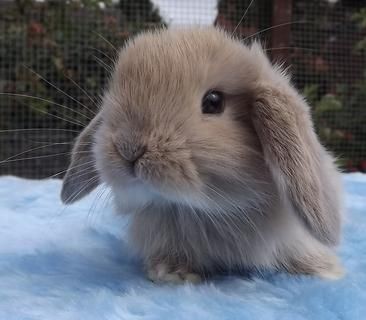
Mini Lops need regular grooming to keep their furs soft and clean. This must be done at least once a week. You must do this more when they are molting to prevent wool blocks. Grooming will prevent the rabbits from ingesting their furs as they self-groom. When fur accumulates inside their stomachs, this can block the flow of food and stools, causing a huge problem.
Never bathe your rabbits because this can stress them. Perform spot-cleaning using a damp towel if they are dirty. You must cut their nails every month, and check their mouth for overgrowth teeth.
Also, their cages, both indoors and outdoors, should be spacious to allow them to hop, stretch, and play freely. Keep the rabbit enclosure tight under lock and key to prevent your rabbits from escaping.
Breeding
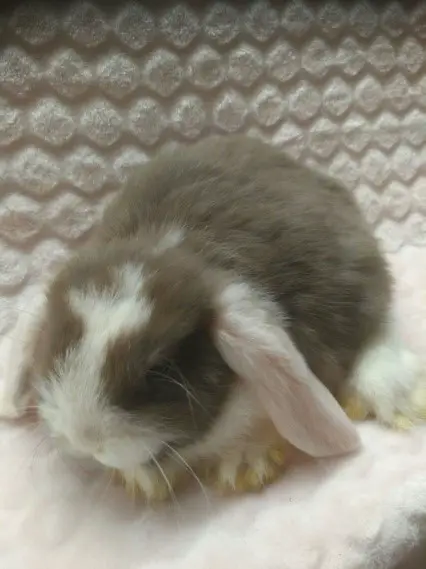
Mini Lops should be 6 months old before they can start breeding. The bucks may breed as young as 4.5 months, but breeders wait until 6 months so you can be sure that these are ready to breed. Male rabbits are ready to breed once their testicles have descended.
The gestation period lasts from 28 to 33 days, while most females may deliver on day 30-31. If you want to breed Mini Lops in captivity, choose a date that you want for the birth, so you’ll be at home to provide the nesting box.
You must plan to ensure that you will be present when the babies need to be with their mom. This is to avoid any issues before they are weaned from their mother. Rabbits may conceive and give birth no matter what season of the year. During the summertime, the babies may make the mother more uncomfortable because it’s too hot. However, it is also dangerous for babies to be born in the wintertime because it’s too cold as they are born hairless. Remember, if the mother does not do well, the babies could all die. Therefore, choose spring and autumn as the best dates to deliver her babies.
Organizations and Clubs
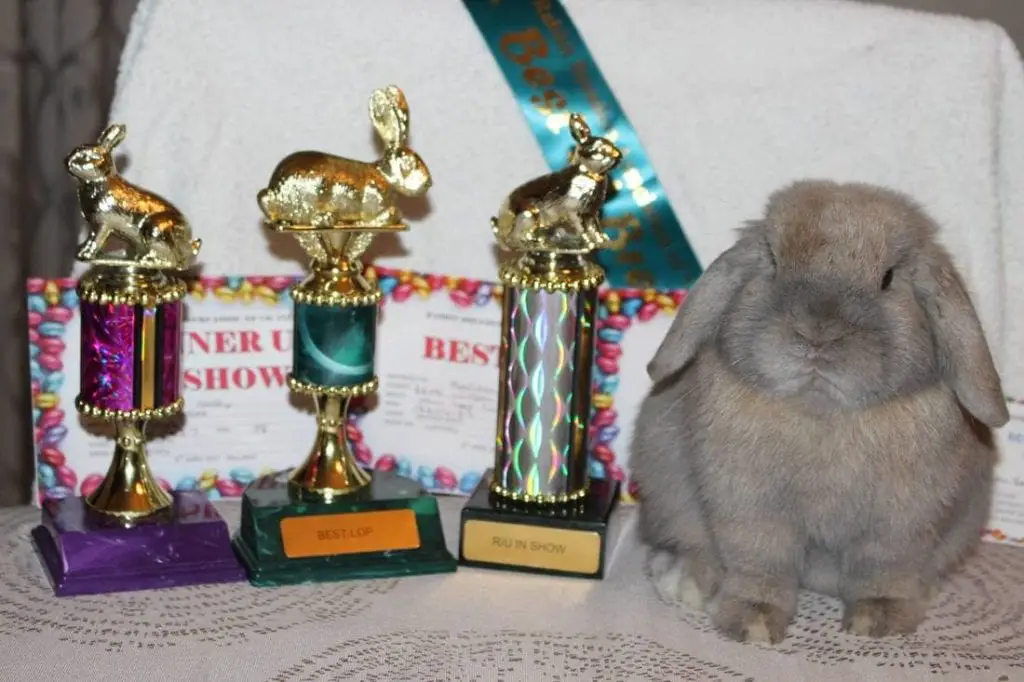
The Mini Lop is very popular, and with the popularity comes several organizations and clubs. Foremost is the Mini Lop lovers’ clubs that support and love this cute little breed to death. The American Rabbit Breeders’ Association (ARBA) recognizes the Mini Lop. The American Mini Lop Rabbit Club is the premier association in promoting and improving the American Mini Lop rabbit breed. Meanwhile, the oldest and the largest Mini Lop association in the United States for the breed is the Mini Lop Rabbit Club of America.
Availability – Where to Get One?

The cost of a Mini Lop depends on whether you are getting it directly from a breeder or not. The price may also depend on what kind you need. Do you need a Mini Lop for show or a pet?
Looking for a reliable breeder is very important to make sure that you are only getting a healthy rabbit and not specimens with genetic disorders such as malocclusion, hooked spines, and other conditions. Reliable breeders will breed these unwanted traits selectively. If you’re looking for a bunny for the show, you should have a purebred variety with no genetic disorders.
How to Care for a Mini Lop
As mentioned, Mini Lops have the same care as with other rabbit breeds. This means giving your pet the best kind of diet, companionship, and rabbit housing. Their main food is hay, and this should be the bulk of their diet. You may also feed your rabbit commercially-made pellets designed specifically for rabbits. These have the needed vitamins and minerals for good health and steady growth. You may also give vegetables and fruits.
Another thing that rabbit owners must consider is that these should be given unlimited fresh water and hay inside their cages. Hay is needed by rabbits in keeping their digestive tract healthy and regular.
Mini Lops are suitable pets for both children and adults, but owners must monitor their pets for any signs of illness. At the first sign of lethargy, poor appetite, loose stools, and vomiting, take your pet to the vet.
And with any pet, everyday handling is a must. An owner who spends time with his pet is more likely to develop a trusting, well-behaved rabbit with full of confidence. Those who only want to place their pets inside a cage and ignores them are inhibiting their pet’s full potential. Keep in mind that most rabbits that have lived their lives to the full are close with their owners.
Clean and maintain the cage of your pet rabbit. Take time to thoroughly clean the cage as well as the cage surroundings at least every week. By cleaning its cage, you are also preventing pet health conditions, which are common in most rabbit species.
FAQs
What size are Mini Lop rabbits?
The smallest Mini Lop rabbit is a small breed of rabbit that weighs only 2 kg. compared to the Dwarf Lop, which is a medium breed that weighs only 2.5 kg. The size and the compactness of a Mini Lop rabbit have made it a very popular breed to care for.
Are Mini Lop rabbits friendly?
Mini Lop rabbits will start as aloof and cautious, but once you handle it daily and you allow it to explore its surroundings and to perceive you as a caring owner, it will become friendly, outgoing, and may even want to play with you.
What do Mini Lop rabbits eat?
Mini Lops will only eat plants. Its diet includes fruits, vegetables, and seeds. It needs a constant supply of hay, which is nibbled by the rabbit day and night.
Will my Mini Lop rabbit stay small forever?
Yes, these rabbits are small and will remain small for the rest of their lives. However, overfeeding can lead to an obese rabbit and may also cause several health issues related to weight and being obese.
How long do Mini Lop rabbits live?
The Mini Lop will live up to 10 years in captivity. Lops that live this long receive good care, proper nutrition, and a lot of love and attention from their owners.
What are the best toys for a Mini Lop rabbit?
Mini Lops can easily get bored and thus may need constant stimulation. Instead of just letting it sit and chew on hay, you can use toys like small bouncy balls, cardboard boxes, pieces of rolled paper, and plastic bottles.
Do Mini Lop rabbits shed their fur?
Mini Lops can shed their fur, and this usually starts from the tip of their heads, to the neck and down to the body and limbs. Shedding is expected during the warm months; you can use a comb to collect hair and to stop the rabbit from ingesting hair.
How do you tame a Mini Lop rabbit?
First, sit right in front of the bunny and just let it come to you. Offer some treats as it comes over. Let it explore your smell and your warmth and simply reward it every time it moves towards you.
Can Mini Lops eat fruit?
Yes, a Mini Lop rabbit will eat fruit and will also eat vegetables. Make sure to offer only organic fruits and vegetables since these don’t contain pesticides and herbicides that can affect your bunny’s health.
Why give a Mini Lop rabbit hay?
Hay is a staple rabbit food. This is important in maintaining regular bowel movements and will help make the rabbit teeth short. The grinding action of its teeth as the rabbit chews on hay helps keep their teeth healthy and trim.
How large does a cage of a Mini Lop rabbits should be?
The cage for a single Mini Lop should be at least 4 x 4 x 4 inches. This may be enough space for a Mini Lop rabbit to play, eat, stay happy, and active.
How much does a Mini Lop rabbit cost?
A Mini Lop rabbit costs around $50 to $70 depending on the gender, size, color, patterns, and the purpose (for pet or show). It is more expensive to buy a Mini Lop rabbit from an online store compared to buying from a local dealer because of the price of shipment and delivery rates.
Is it OK to feed Mini Lop rabbits meat?
No, Mini Lop rabbits will only tolerate fruits and vegetables and will not eat meat no matter how tasty it is.
How do Mini Lops sleep?
Mini Lop rabbits will sleep in small dens that they make out of hay or ground soil. But in captivity, you must provide an appropriate den made of cardboard or any feasible material to house your pet.
Can you place two or more Mini Lop rabbits in one cage?
Yes, you can place two or more r Mini Lop rabbits in a cage. This breed is highly sociable and would love the company; these rabbits are not territorial and won’t be aggressive towards other individuals.
Can you place different breeds of rabbits in one cage?
Yes, you can place different breeds of rabbits in a cage, but it’s better to place rabbits of the same breed in one cage so you can better care for them. Remember, different rabbit breeds
How fast can a Mini Lop rabbit multiply?
A female Mini Lop rabbit can become pregnant twice a year, and each litter can have up to 5 or more babies. Thus in the right conditions, Mini Lops can have ten or more babies in a year with each one reaching maturity in just a few months!
Can a rabbit die of loneliness?
Some breeders say that it’s better to house Mini Lop rabbits as a pair to prevent loneliness. Mini Lop rabbits are social animals, and having no companion can make them lonely but not enough to kill them.
Are Mini Lop rabbits aggressive with the same breed?
No, Mini Lop rabbits are not aggressive with other rabbit breeds. They will happily stay in a cage with other breeds, but it’s best to house your Mini Lop rabbits together so that you can better care for your pets.
Will rabbits eat their poop?
Yes, rabbits will eat their poop. You can prevent this by removing poop as soon as you see it and by providing ample food inside their cages.
Will Mini Lop rabbits eat their own young?
Some females may eat their own young, especially newborn Mini Lops. It’s best to remove the mother from the cage if you notice this behavior and to never allow the female to breed again.
When do Mini Lop rabbits give birth?
Mini Lop rabbits can give birth any time in a year; this means there is no breeding period for these rabbits. Therefore, if you plan to breed cute rabbits, the quick-breeding Mini Lop rabbit is the best choice.
How long can a Mini Lop rabbit survive without food?
A Mini Lop rabbit is a voracious eater and will not survive without food for only 12 hours. Therefore, if you plan to leave your bunny alone for a day, have someone feed them, or else these will go hungry and may become stressed.
Can you sleep with your bunny inside your room?
Yes, you can have your bunny stay with you inside your room and even near you in your bed. Just make sure that your bedroom has been rabbit-proofed so you can protect your pet from any dangers.
How to rabbit-proof your home?
To rabbit-proof your home, seal off any openings on walls and floors, remove anything that your bunny can reach and destroy. Use a durable pet fence to cordon off places that your pet is not allowed to go.
How to know if a Mini Lop rabbit is happy?
A Mini Lop rabbit is happy when it will come to you when you call for it or when you offer it food. It is happy when it plays with its companions and if it eats healthy.
How to know if a Mini Lop rabbit is in pain?
If you pick up a Mini Lop rabbit and it growls a bit or makes a scratchy noise from its throat, then this is a sign that it is in pain. Take your pet immediately to a vet for treatment.
How to know if your rabbit wants your attention?
Your rabbit will look at you directly. It will stare continuously to attract your attention and will allow itself to be picked up from its cage.
Why do rabbits stomp their feet?
Rabbits like the Mini Lop rabbit will continuously stomp their feet, specifically their hind feet, to signal that they are upset or they don’t like what you’re doing.
Why do rabbits lick their owners?
Rabbits lick their owners if they are happy and contented, and it wants to return the favor.
Can rabbits get stressed?
Yes, rabbits can get stressed, and it will show its feelings by not eating, not drinking, and just remain still.
Can you touch or handle newborn rabbits?
Yes, you can handle newborns without fear that the mother rabbit will eat them afterward because mother rabbits are not as protective of her babies like other mammals.
How do you handle Mini Lop rabbits?
You can pick up a Mini Lop rabbit by holding its body and raising it only a few inches from the ground. Don’t raise it too high because it might become anxious that you might drop it.
Is it dangerous to get bitten by a rabbit?
Yes, rabbit bites and scratches can be fatal because these can transmit diseases.
